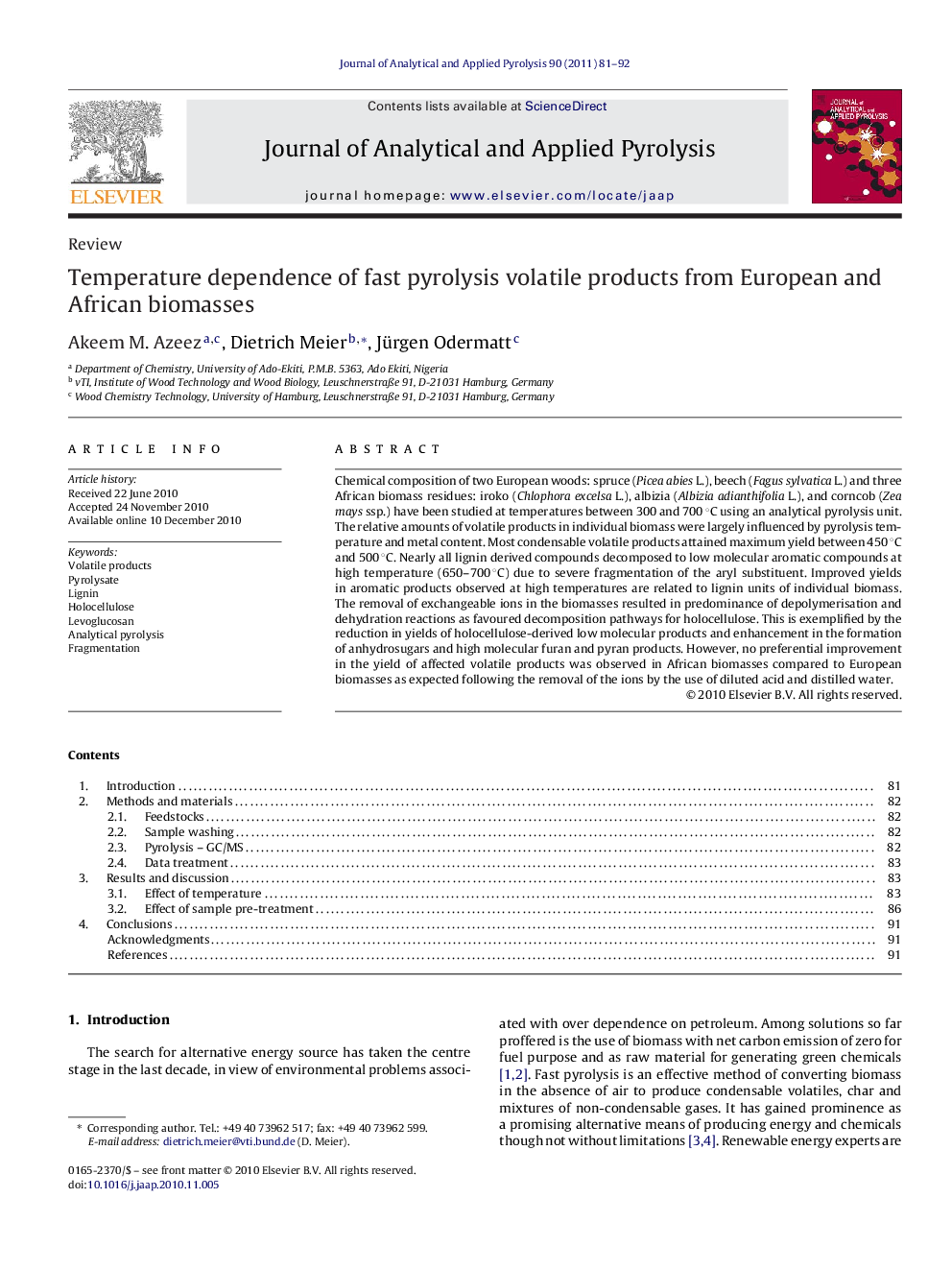| Article ID | Journal | Published Year | Pages | File Type |
|---|---|---|---|---|
| 7607122 | Journal of Analytical and Applied Pyrolysis | 2011 | 12 Pages |
Abstract
Chemical composition of two European woods: spruce (Picea abies L.), beech (Fagus sylvatica L.) and three African biomass residues: iroko (Chlophora excelsa L.), albizia (Albizia adianthifolia L.), and corncob (Zea mays ssp.) have been studied at temperatures between 300 and 700 °C using an analytical pyrolysis unit. The relative amounts of volatile products in individual biomass were largely influenced by pyrolysis temperature and metal content. Most condensable volatile products attained maximum yield between 450 °C and 500 °C. Nearly all lignin derived compounds decomposed to low molecular aromatic compounds at high temperature (650-700 °C) due to severe fragmentation of the aryl substituent. Improved yields in aromatic products observed at high temperatures are related to lignin units of individual biomass. The removal of exchangeable ions in the biomasses resulted in predominance of depolymerisation and dehydration reactions as favoured decomposition pathways for holocellulose. This is exemplified by the reduction in yields of holocellulose-derived low molecular products and enhancement in the formation of anhydrosugars and high molecular furan and pyran products. However, no preferential improvement in the yield of affected volatile products was observed in African biomasses compared to European biomasses as expected following the removal of the ions by the use of diluted acid and distilled water.
Keywords
Related Topics
Physical Sciences and Engineering
Chemistry
Analytical Chemistry
Authors
Akeem M. Azeez, Dietrich Meier, Jürgen Odermatt,
